The Beauty Secrets Of The Most Beautiful Women Through The Ages
Since the Golden Age of Hollywood, our culture’s beauty trends have been defined by movie stars. Though Instagram influencers have taken the reins over the past few years, looking to public figures for beauty inspiration isn’t anything new. Before the rise of Hollywood, royal and noblewomen were influential in beauty trends.
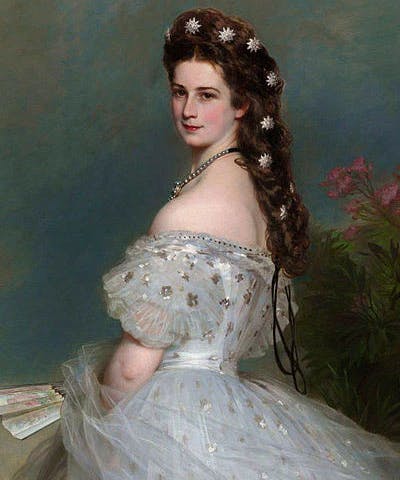
Though some of us (and by us, I mean me copying Kate Middleton’s makeup) still look at royal women for beauty inspiration, they used to be the most fashionable women in society. From Ancient Egypt to 19th-century Austria, here are some of the most beautiful women in history and how they created their iconic looks.
First Century B.C., Egypt: Cleopatra
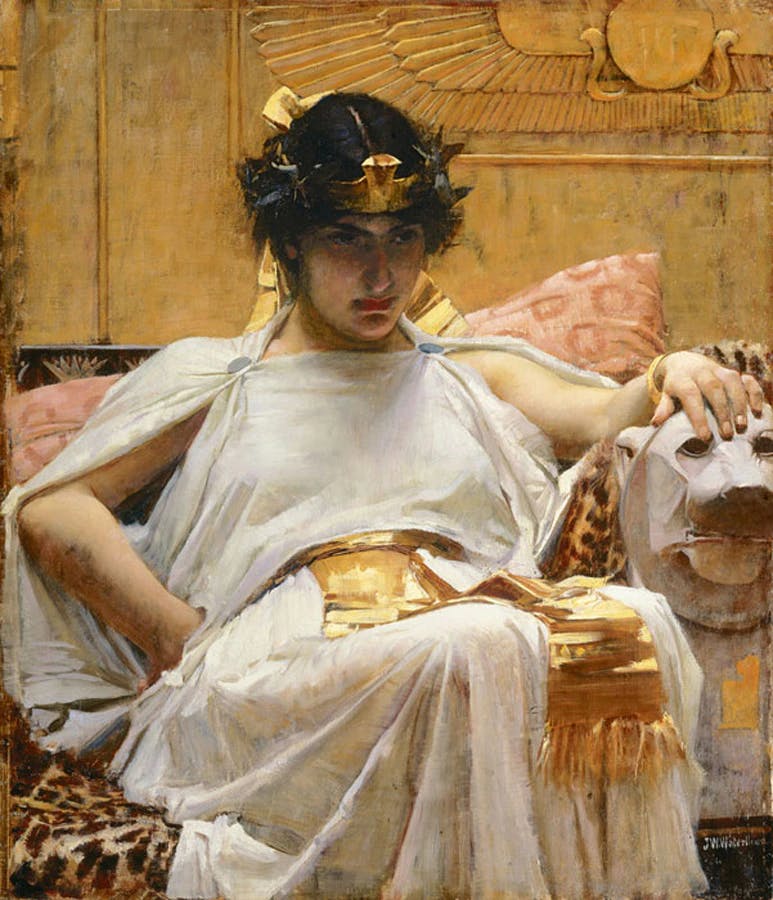
Cleopatra, by John William Waterhouse. Public Domain/Wikimedia Commons
Cleopatra is famous for using her power and beauty to seduce powerful men like Julius Caesar and Mark Antony. Legend says that she seduced Caesar after she was smuggled into his quarters by rolling herself up inside a rug. Though her attractiveness is up for debate, there’s no doubt that her looks and personality helped shape the politics of the Ancient world. She is known for being one of the most intelligent women in Ancient Egypt, which automatically makes her one of our favorites.
Cleopatra's looks and personality helped shape the politics of the Ancient world.
She was portrayed by Elizabeth Taylor in the 1963 film Cleopatra. Taylor’s version of Cleopatra features makeup that was popular in Ancient Egypt like intricate eyeliner, colorful eyeshadow, and red lips. Since Cleopatra was the last Queen of Egypt, it’s very likely that she had access to the most extravagant makeup of her time.
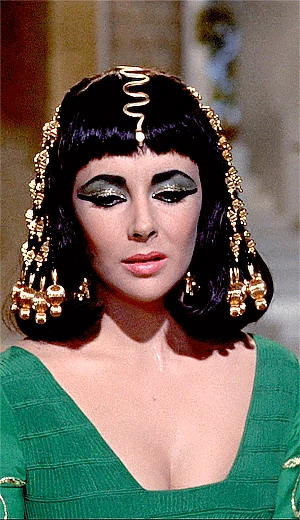
Ancient Egyptians are most famous for their intricate eyeliner styles. The eyeliner was often made of kohl or other lead-based materials, but the purpose of this look was for reasons beyond cosmetics. It was worn by both men and women to show class status, to prevent disease, and to show respect to the gods. It’s also believed that Cleopatra used malachite as green eye shadow, as well as red ochre for her red lipstick.
Renaissance: Lucrezia Borgia
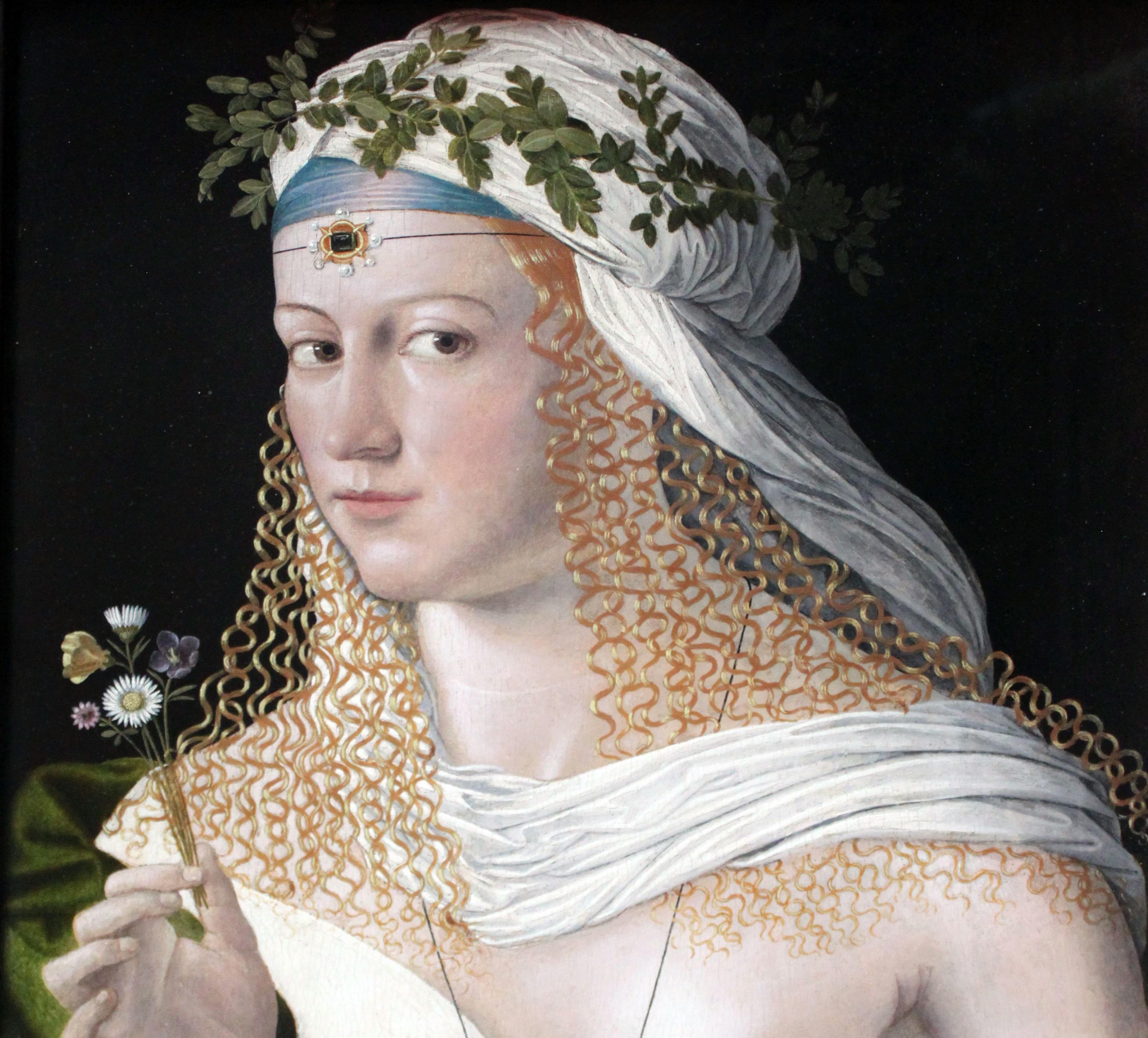
Idealized Portrait of a Courtesan as Flora, c. 1520. Public Domain/Wikimedia Commons
There are very few women in history as mysterious as Lucrezia Borgia. She’s known for her beauty and her involvement in the scandalous affairs of her family. She was the daughter of Pope Alexander VI and sister of Cesare Borgia, who were two of the most infamous men of the Italian Renaissance. Her father is known as "history's dirtiest pope" due to scandalous accusations like bribing his way into the papacy, killing his enemies, and having orgies within the walls of the Vatican.
It's rumored that Lucrezia would entice her family’s enemies with her beauty before poisoning them.
Her brother, Cesare, was a Cardinal during the beginning of their father’s papal reign, but later left the church to become an army general. Even when he was in the Church, Cesare was infamous for his womanizing ways, killing his enemies, and political ambition. It’s widely believed that Cesare was the inspiration behind Niccolo Machiavelli’s The Prince.
It’s rumored that Lucrezia not only had an incestuous affair with Cesare but was just as depraved as her father and brother. One of the most popular rumors about Lucrezia is that she would entice her family’s enemies with her beauty before poisoning them. Her scandalous reputation was the inspiration behind Gaetano Donizetti’s 1833 opera, which was named after her.
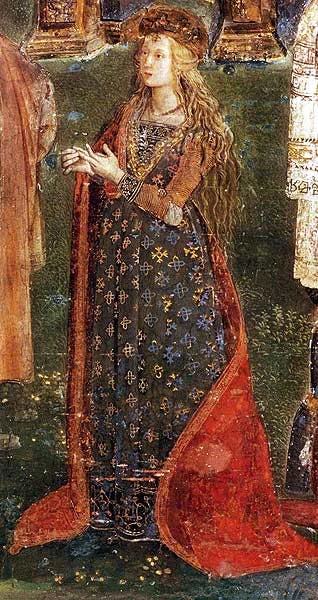
Lucrezia Borgia. Public Domain/Wikimedia Commons
Though we’ll never know for sure if Lucrezia used her beauty to do her family’s dirty work, historians tend to agree that she was the epitome of a beautiful woman in the Renaissance era. Very little is known about Lucrezia’s beauty routine because she’s described to be a natural beauty. She’s known to have had long blonde hair, hazel eyes, and pale skin. She likely followed the beauty trends of the Italian Renaissance, like avoiding the sunlight to maintain a pale complexion, using saffron as rouge on lips and cheeks, and darkening the eyebrows with "antimony or soot."
18th Century: Marie Antoinette, Queen of France
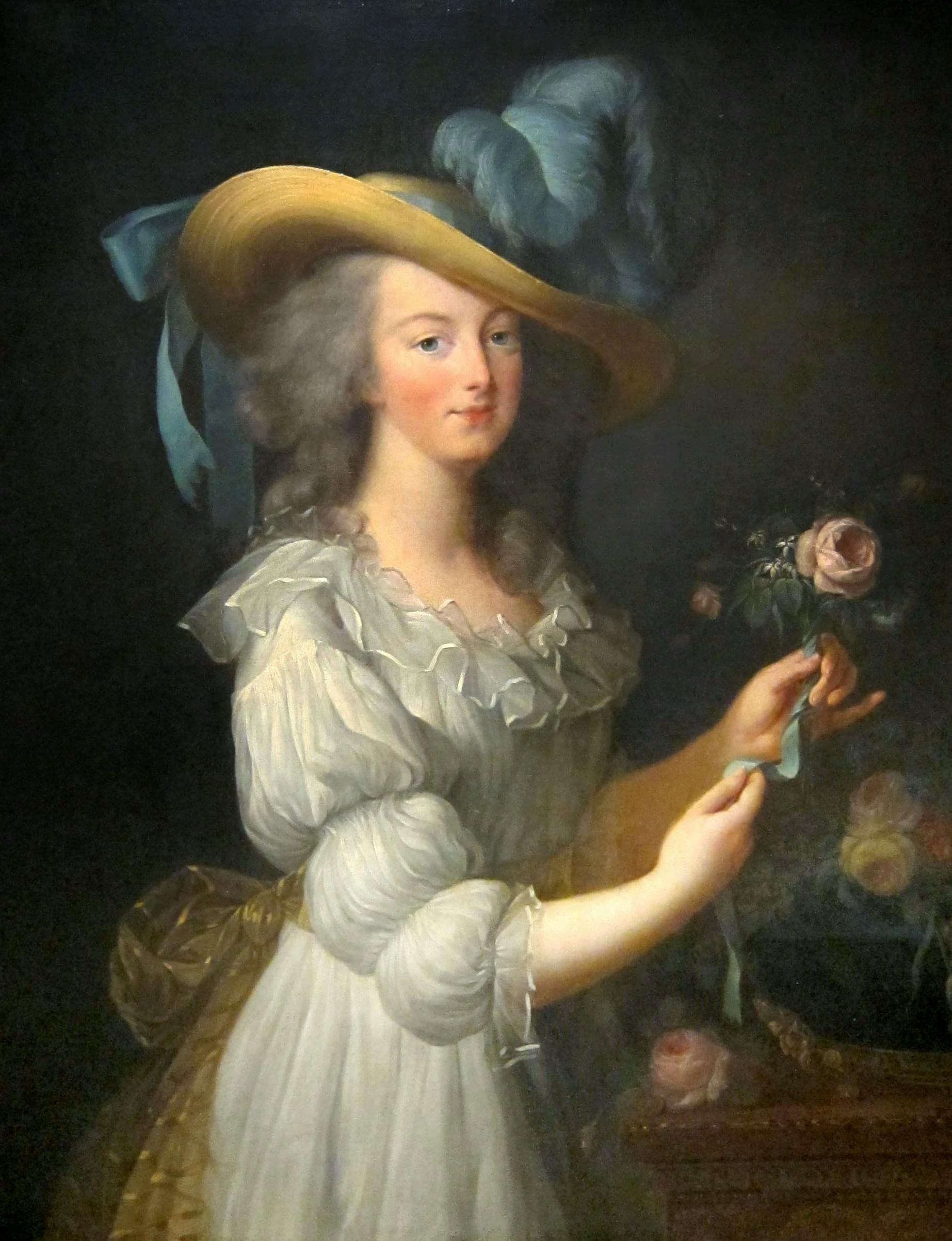
Marie Antoinette in a muslin dress, after Elisabeth Vigée Le Brun. Public Domain/Wikimedia Commons
Before the French Revolution began in 1789, Marie Antoinette was arguably the most glamorous woman in the world. She was so extravagant that she’s still known as a style icon 227 years after her execution. Though she’s mainly famous for her love of pastels and extravagant hairstyles, her DIY beauty secrets put all of the DIY face masks you read about in Seventeen to shame.
She wore copious amounts of rouge on her lips and cheeks, which was made from beetles.
Some of her most famous beauty secrets included a DIY skincare routine and applying thick white powder to her face to hide her smallpox scars. Her face mask consisted of cognac, an egg, powdered milk, and a lemon. She was also known for applying copious amounts of rouge to her lips and cheeks, which was often made of beetles. Those who couldn’t afford expensive beetle rouge often had to resort to lead and mercury-based makeup.
Her hairstyles were often as high as two feet above her head and took hours to do in the morning. Her hairstyles included several wigs (even though she dyed her real hair strawberry blonde with a saffron, turmeric, sandalwood, and rhubarb concoction), and she often accessorized with flowers and birds.
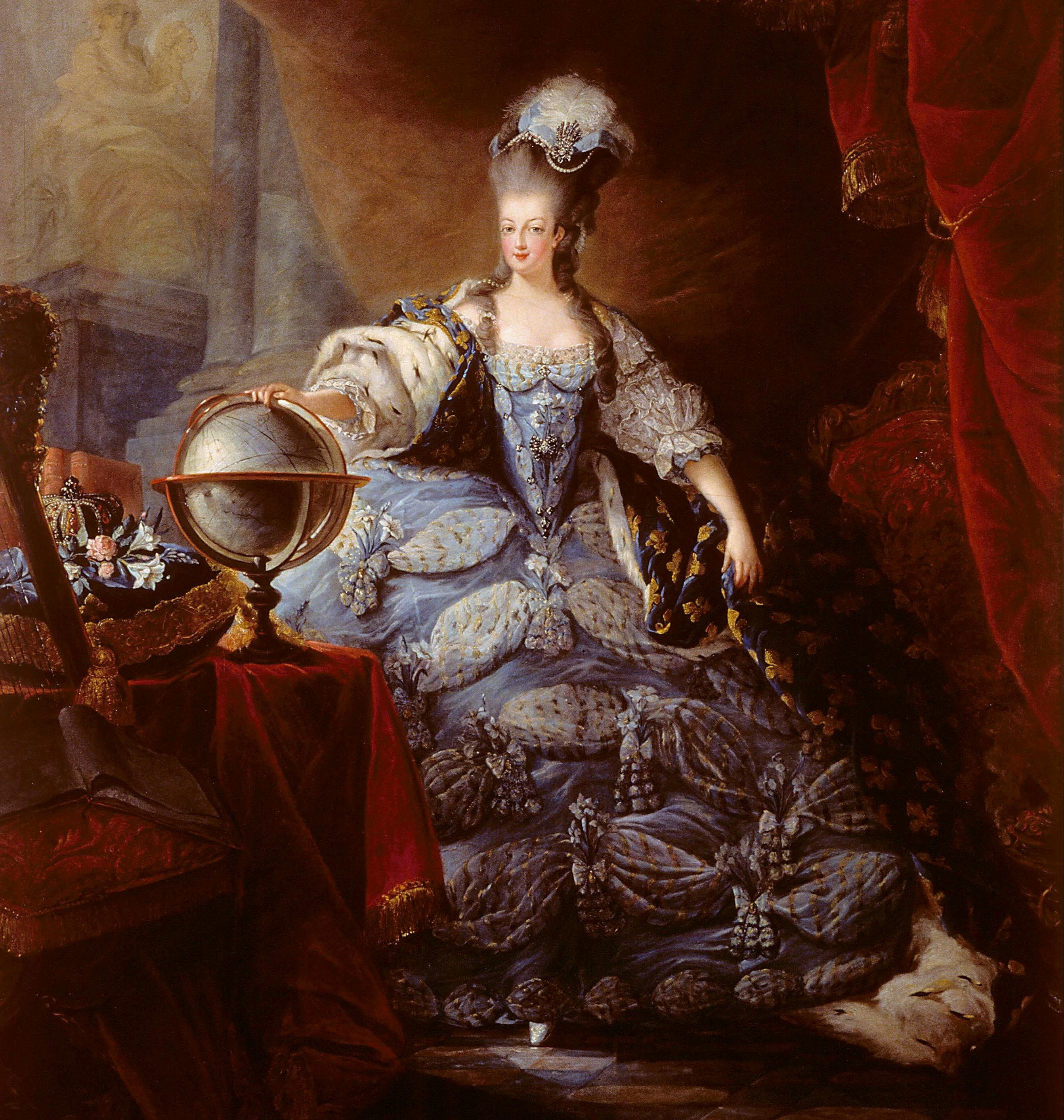
Marie-Antoinette, 1775. Public Domain/Wikimedia Commons
When it came to her clothes, she would rarely wear the same outfit twice (Blair Waldorf would be so proud) and would change outfits up to three times a day. When the people of France found out she was changing her clothes three times a day while they were starving on the streets in Paris, the people revolted. Her lack of knowledge of the suffering of the French people let to the development of the "let them eat cake" myth.
19th Century: Empress Elisabeth “Sissi” of Austria
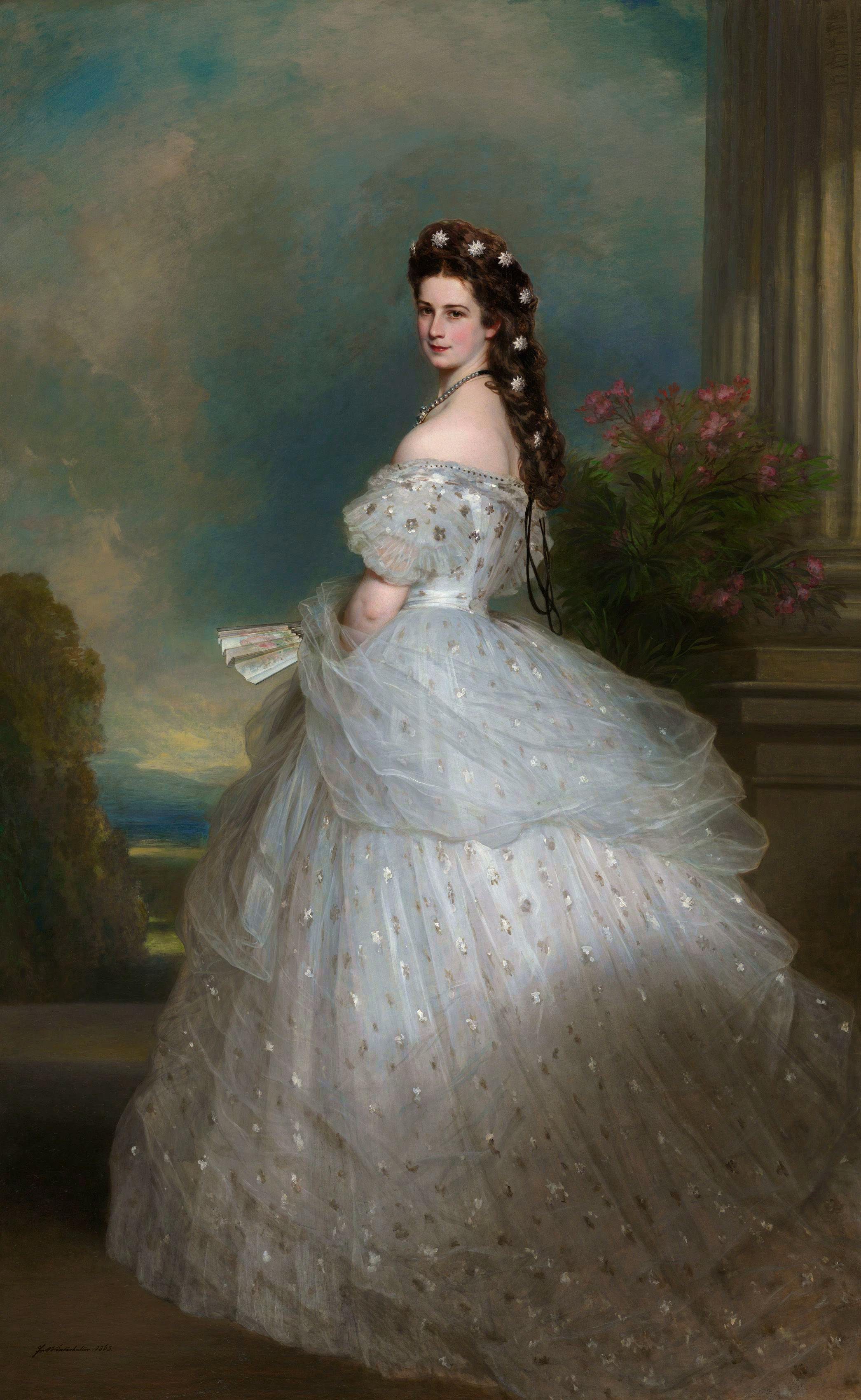
Empress Elisabeth of Austria in dancing-dress, 1865, by Franz Xaver Winterhalter. Public Domain/Wikimedia Commons
Marie Antoinette’s beauty routine pales in comparison to the extravagance of Empress Elisabeth’s obsession with beauty. She went to extreme lengths to maintain her youthful beauty, long hair, and slim figure.
Unlike Marie Antoinette, Sissi wasn’t obsessed with makeup because she was considered a natural beauty, but this didn’t stop her from having an excessive skincare routine. She was a fan of DIY masks, some of which used ingredients we use today like strawberries and rose water, but it’s also rumored that she applied "raw veal to her skin at night" to help maintain a youthful glow. She often used her position in court to obtain luxurious and time-consuming beauty products like a cream that “had to be stirred up to 12 hours.”
To help maintain healthy hair, it was washed with raw eggs and brandy every three weeks.
Sissi was most famous for her long chestnut brown hair. Her hair was so long it reached the floor, and she was never seen in public without an extravagant updo. Her updos consisted of dozens of braids and often took around three hours to style. Due to the weight of her hair, she was prone to headaches. To help maintain healthy hair, it was "washed every three weeks with a mixture of raw eggs and brandy."
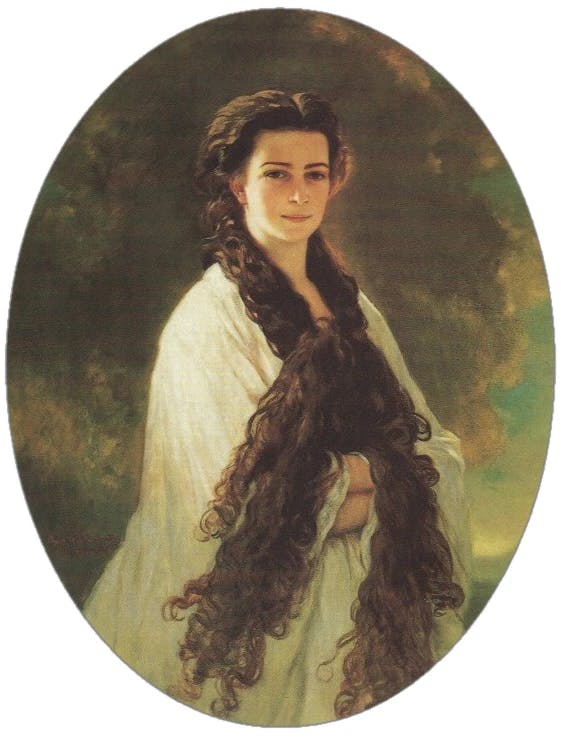
Public Domain/Wikimedia Commons
Her diet and exercise routine were just as excessive (if not more) than her skincare and hair routine. Obsessed with having an abnormally small waist (corset reduction wasn't enough), she followed a strict diet consisting of only a few foods, often starving herself. She also exercised obsessively through long walks, gymnastics, and horseback riding. Though it was not a known condition at the time, many believe that she suffered from anorexia.
Closing Thoughts
Let’s be real, these four women wouldn’t only dominate Instagram if they were around today, but the beauty trends they participated in and helped create also helped define the beauty industry we know and love today. It may seem silly to some to copy an Instagram star’s makeup look, but women have been doing it for thousands of years, and it’s not going anywhere anytime soon.